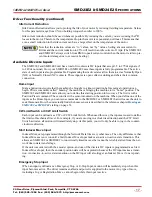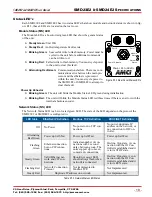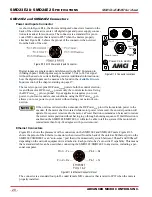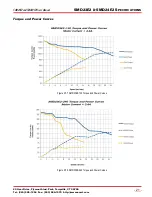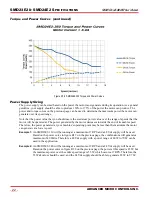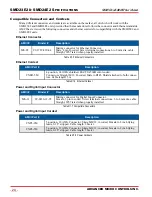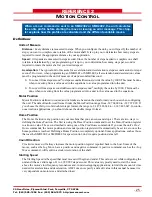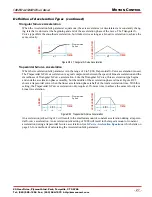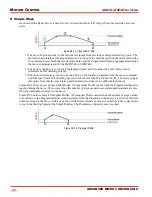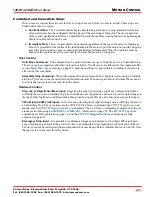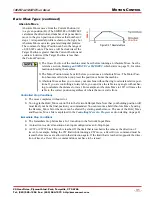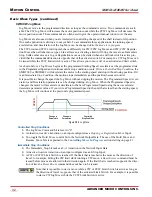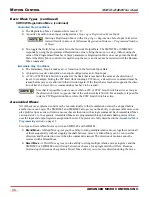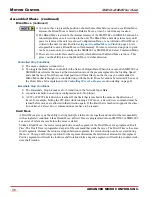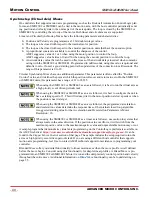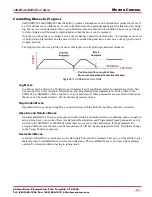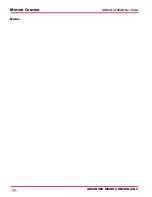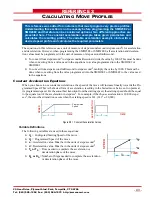
20 Gear Drive, Plymouth Ind. Park, Terryville, CT 06786
Tel: (860) 585-1254 Fax: (860) 584-1973 http://www.amci.com
SMD23E2 and SMD24E2 User’s Manual
M
OTION
C
ONTROL
31
Basic Move Types (continued)
Absolute Move
Absolute Moves move from the Current Position (A)
to a given position (B). (The SMD23E2 or SMD24E2
calculates the direction and number of steps needed to
move to the given position and moves that number of
steps.) A trapezoidal profile is shown to the right, but
Absolute Moves can also generate triangular profiles.
The command’s Target Position can be in the range of
±8,388,607 counts. The move will be clockwise if the
Target Position is greater than the Current Position and
counter-clockwise if the Target Position is less than
the Current Position.
1) The
Home Position
of the machine must be set before running an Absolute Move. See the
, which starts on page 53, for infor-
mation on homing the machine.
2) The Motor Position must be valid before you can use an Absolute Move. The Motor Posi-
tion becomes valid when you preset the position or home the machine.
3) Absolute Moves allow you to move your machine without having to calculate relative posi-
tions. If you are controlling a rotary table, you can drive the table to any angle without hav-
ing to calculate the distance to travel. For example an Absolute Move to 180° will move the
table to the correct position regardless of where the move starts from.
Controlled Stop Conditions
The move completes without error.
You toggle the Hold_Move control bit in the Network Output Data. Note that your holding position will
most likely not be the final position you commanded. You can resume a held Absolute Move by using
the Resume_Move bit or the move can be aborted by starting another move. The use of the Hold_Move
and Resume_Move bits is explained in the
Immediate Stop Conditions
The Immediate Stop bit makes a 0
1 transition in the Network Input Data.
An inactive-to-active transition on an input configured as an E-Stop Input.
A CW or CWW Limit Switch is reached. If the limit that is reached is the same as the direction of
travel, for example, hitting the CW limit while running a CW move, a
Reset Errors
command must be
issued before moves are allowed in that direction again. If the limit that is reached is opposite the direc-
tion of travel, a
Reset Errors
command does not have to be issued.
Figure R2.7 Absolute Move
SP
E
E
D
POSITION
A
B

